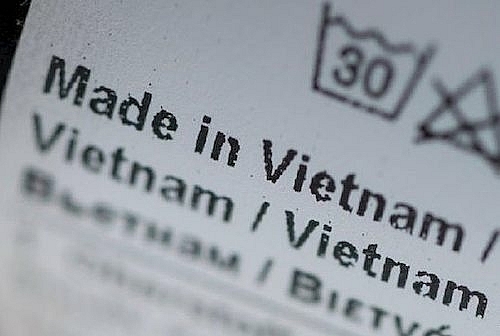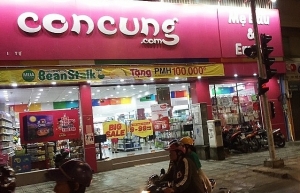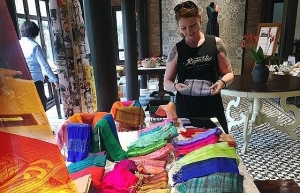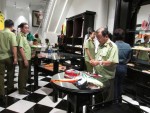30 per cent of localisation ratio yet to be "made in Vietnam" goods
 |
| Goods can evenn use only imported materials as long as the simple processing is done in Vietnam |
The Ministry of Industry and Trade (MoIT) is gathering recommendations for its fresh draft circular. Accordingly, goods having a single country of origin like crop plants, products from crop plants, and minerals can be classified as “Made in Vietnam”.
Goods not having a single country of origin but being processed in Vietnam have to switch to the Harmonized Commodity Description and Coding System (HS Codes) and source 30 per cent of the value of input materials locally to be recognised as Vietnamese in origin.
Otherwise, goods can consist of 100 per cent imported materials but have to undergo at least simple processing in Vietnam.
For instance, regarding plywood, most firms use HS Codes to determine the good’s origin, because it is hard to inspect the origin of materials. Therefore, the goods, whose materials are imported and underwent simple processing in Vietnam still satisfy the “Made in Vietnam” standards.
The draft circular also stipulates that commodities temporarily imported for re-export and goods in transit are not “made in Vietnam”.
According to the MoIT's assessment, the draft circular will enable law-abiding companies to face false accusations of origin fraud. In addition, the regulations will steadily roll back the practice of putting the "Made in Vietnam" label on imported goods. In addition, the draft does not offer new procedures, so it will not add administrative expenses to companies.
Over the past time, it was companies' duty to add labels identifying the goods' origin based on their best knowledge, according to the Decree No.43/2017/ND-CP on the labelling of goods. However, this has lead to many cases of origin fraud like that committed by Khaisilk two years ago.
 Origin scandal undoes consumer trust in Con Cung Origin scandal undoes consumer trust in Con Cung |
 PM defends ’made in Việt Nam’ push PM defends ’made in Việt Nam’ push |
 Khaisilk violations to draw strict punishment Khaisilk violations to draw strict punishment |
 Khaisilk chairman faces up to 15 years in prison Khaisilk chairman faces up to 15 years in prison |
What the stars mean:
★ Poor ★ ★ Promising ★★★ Good ★★★★ Very good ★★★★★ Exceptional
Related Contents
Latest News
More News
- Opening remarks of 14th National Party Congress (January 20, 2026 | 09:44)
- First working day of 14th National Congress of Communist Party of Vietnam (January 19, 2026 | 08:54)
- Viettel starts construction of semiconductor chip production plant (January 16, 2026 | 21:30)
- Redefining Vietnam’s growth model for the era of innovation (January 16, 2026 | 16:40)
- Foreign sentiment towards Vietnam turns more positive (January 15, 2026 | 11:08)
- Vietnam ranks 38th in global AI adoption (January 14, 2026 | 16:01)
- European business confidence reaches highest in seven years (January 13, 2026 | 10:17)
- UOB lifts Vietnam growth outlook to 7.5 per cent for 2026 (January 10, 2026 | 09:00)
- Vietnam leads ASEAN in EV market growth (January 09, 2026 | 14:39)
- Electronics drive Vietnam’s trade growth as exports hit record in 2025 (January 07, 2026 | 10:23)

 Tag:
Tag:

























 Mobile Version
Mobile Version